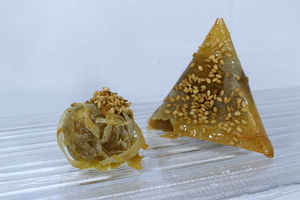Eggs
We refer to hens’ eggs.
There are three parts to an egg: the shell, the egg white and the yolk. The shell can be white or brown.
Eggs play an important role in diets. They are a basic cooking ingredient, highly nutritious, tasty, versatile, easy to cook and with a great value for its price. Eggs have the highest nutrient density among the foods we usually consume. These nutrients, are all useful for our organism.
Around 30% of the egg weight corresponds to the yolk, a 60% to the egg white and a 10% to the shell. Two medium-sized eggs are considered as the average portion, with a total weight of 100 edible grams, without the shell. The nutritional components are distributed heterogeneously, with huge differences between the egg white and the yolk. Fat, cholesterol and some micronutrients are present in the yolk, while the egg white is made of water (88%) and proteins (11%), being the ovalbumin the most important one. The content of some minerals and water soluble vitamins is also higher in the yolk.
-
Type of dish
- Beers
- Cocktails
- Breakfasts and brunch
- Burguers
- Juices, milkshakes and beverages
- Shellfish
- Bread and pastries
- Pizzas, patty
- Dessert
- Pasta
- Sándwich
- Pastries
- Finger foods
- Ice creams and sorbets
- Legumes
- Salads
- Eggs
- Patty
- liqueur
- Harvard plate
- Main course
- Meats
- Fish
- Birds
- Vegetables
- Soups and creams
- Rices
- Coffee, chocolate and infusion
- Cheeses
- Appetizers and canapes
- Temperature
- Cuisine type
- Additional culinary preparation
- Conservation technique
- Seasonal recipes
-
- Aromatic herbs
- Beverages
- Big game hunt
- Bread and pastries
- Canned goods and pickles
- Cereals
- Condiments, spices and additives
- Cooked, salted, preserved and cold meats
- Dried fruits and nuts
- Dry pulses
- Edible oils and vinegars
- Eggs and derivatives
- Feathered game hunt
- Fish cuts
- Fishes
- Insects
- Kitchen and bakery tecniques
- Kitchen and bakery utensils
- Meat cuts
- Meats
- Milk, cream and derivatives
- Mushrooms
- Offal
- Pasta, rice, flour and derivatives
- Poultry
- Seafood
- Service techniques
- Service utensils
- Vegetables cuts
- Vegetables, fruits, tubers and seaweed































